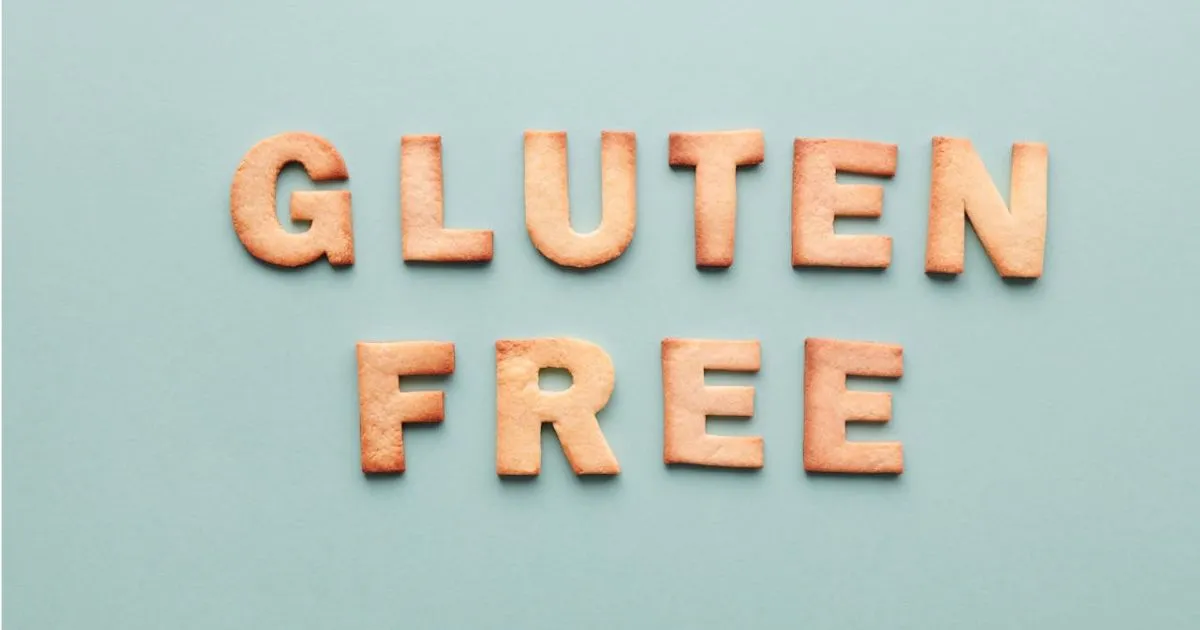Last updated on November 1, 2024
Embarking on a gluten free diet can be a significant lifestyle change, whether due to celiac disease, non-celiac gluten sensitivity, or a personal choice to avoid gluten. While the intention is to improve health and well-being, it’s easy to make mistakes that can undermine your efforts. This guide will highlight the five most common mistakes people make when going gluten-free and provide practical tips to help you avoid them. By understanding these pitfalls, you can ensure your gluten free diet is both safe and nutritious.
Table of Contents
1. Relying Too Heavily on Processed Gluten Free Foods
The Mistake:
- One of the most common mistakes people make when transitioning to a gluten free diet is relying too heavily on processed gluten-free products like bread, pasta, cookies, and snacks. While these items are convenient and help replace traditional gluten-containing foods, they can be high in sugar, unhealthy fats, and lack essential nutrients.
Why It’s a Problem:
- Nutritional Imbalance: Many processed gluten-free foods are made with refined flours like white rice flour, which are low in fiber, vitamins, and minerals. This can lead to nutritional deficiencies, particularly in fiber, iron, and B vitamins.
- Empty Calories: These products can also be calorie-dense but not very filling, leading to overeating and weight gain. A study published in the Journal of Human Nutrition and Dietetics found that individuals on a gluten free diet often consume more fat and sugar, leading to potential health risks.
How to Avoid It:
- Focus on Whole Foods: Instead of relying on processed gluten-free products, build your diet around naturally gluten-free whole foods like fruits, vegetables, lean proteins, legumes, nuts, seeds, and gluten-free whole grains such as quinoa, brown rice, and millet.
- Read Labels Carefully: When you do choose gluten-free packaged foods, read the labels to ensure they are low in sugar and unhealthy fats and contain beneficial nutrients like fiber and protein.
2. Neglecting to Check for Hidden Gluten

The Mistake:
- Gluten can be hidden in many foods and products that you might not suspect, from sauces and dressings to medications and supplements. A common mistake is assuming that a food is gluten-free without checking labels or asking about ingredients.
Why It’s a Problem:
- Accidental Gluten Exposure: Even small amounts of gluten can cause symptoms and intestinal damage in people with celiac disease and can trigger reactions in those with gluten sensitivity. Hidden gluten can be found in additives like malt flavoring, modified food starch, and soy sauce, which are commonly used in processed foods.
- Cross-Contamination: Gluten can also be present due to cross-contamination during food processing, especially in products labeled as “gluten-free” but processed in facilities that handle wheat, barley, or rye.
How to Avoid It:
- Read Ingredient Labels: Always read labels on packaged foods, even if they’re labeled gluten-free, to check for hidden sources of gluten. Look for certifications like the Gluten-Free Certification Organization (GFCO) seal, which ensures products meet strict gluten-free standards.
- Ask Questions: When dining out or buying prepared foods, ask about ingredients and preparation methods to ensure your meal is truly gluten-free and not at risk of cross-contamination.
3. Assuming All Gluten Free Foods Are Healthy

The Mistake:
- Many people assume that just because a food is labeled “gluten free,” it is automatically healthy. This misconception can lead to overconsumption of gluten free snacks, desserts, and other processed foods, which may be high in calories, sugar, and unhealthy fats.
Why It’s a Problem:
- Misleading Health Claims: The “gluten free” label can give a false sense of security, leading people to choose foods that are not necessarily nutritious. For example, gluten free cookies or chips may still be high in sugar, sodium, and unhealthy fats, contributing to poor diet quality and health issues like weight gain or heart disease.
- Nutrient Deficiencies: Over-reliance on gluten free junk food can result in a diet that is low in essential nutrients, further exacerbating the risk of deficiencies common in those on a gluten free diet.
How to Avoid It:
- Prioritize Nutrient-Dense Foods: Focus on eating a variety of whole, nutrient-dense foods, including plenty of fruits, vegetables, lean proteins, and gluten free whole grains. These foods are naturally gluten free and provide essential nutrients that support overall health.
- Be Selective with Gluten Free Products: Choose gluten free products that are made with whole grains, are fortified with vitamins and minerals, and contain minimal added sugars and unhealthy fats.
4. Overlooking Nutritional Balance

The Mistake:
- In the process of eliminating gluten, some people forget to maintain a balanced diet, which can lead to missing out on essential nutrients like fiber, iron, calcium, and B vitamins.
Why It’s a Problem:
- Nutritional Deficiencies: Gluten-containing grains like wheat are a significant source of several nutrients, including fiber, B vitamins, and iron. Without proper planning, a gluten free diet can become deficient in these nutrients. Research published in Clinical Nutrition highlights that people on gluten free diets are often at risk for lower intakes of iron, folate, and fiber.
- Digestive Issues: A lack of fiber, in particular, can lead to digestive problems like constipation, which is a common issue for people new to a gluten free diet.
How to Avoid It:
- Incorporate Gluten-Free Whole Grains: Include gluten-free grains like quinoa, buckwheat, millet, and brown rice in your diet, as they provide fiber, B vitamins, and other essential nutrients.
- Diversify Your Diet: Ensure your diet includes a variety of nutrient-dense foods, such as leafy greens, nuts, seeds, legumes, and fortified gluten-free products to meet your nutritional needs.
5. Not Planning Meals and Snacks in Advance

The Mistake:
- Failing to plan meals and snacks can lead to poor food choices, reliance on unhealthy convenience foods, and unintentional gluten consumption when you’re hungry and options are limited.
Why It’s a Problem:
- Risk of Gluten Exposure: Without a plan, you might find yourself in situations where gluten-free options are unavailable, increasing the likelihood of accidental gluten consumption.
- Increased Temptation: When you’re hungry and unprepared, you’re more likely to reach for quick, processed gluten-free snacks that may not be the healthiest choices, potentially leading to poor diet quality and weight gain.
How to Avoid It:
- Meal Planning: Take time each week to plan your meals and snacks. Prepare gluten-free meals in advance, and keep healthy snacks like fruits, nuts, and gluten-free granola on hand. This ensures you always have safe and nutritious options available.
- Pack Snacks: When you’re on the go, carry gluten-free snacks with you to avoid being caught in situations where gluten-free options are limited.
Conclusion
Navigating a gluten free diet can be challenging, but avoiding these common mistakes can help you stay healthy and satisfied while ensuring that you meet your nutritional needs. By focusing on whole foods, being vigilant about hidden gluten, making informed choices, maintaining a balanced diet, and planning your meals, you can successfully manage a gluten-free lifestyle without sacrificing your health or well-being.
Remember, the key to thriving on a gluten free diet is education and preparation. By understanding these common pitfalls and taking proactive steps to avoid them, you can enjoy a varied, nutritious, and safe gluten free diet that supports your overall health.
Frequently Asked Questions (FAQ)
1. Can I trust all foods labeled as gluten-free?
While foods labeled “gluten-free” should contain less than 20 parts per million (ppm) of gluten, it’s important to read the ingredient list and be aware of potential cross-contamination. Look for products that are certified by reputable organizations like the Gluten-Free Certification Organization (GFCO) for extra assurance.
2. What are some nutrient-rich gluten-free alternatives to wheat?
Great gluten-free alternatives include quinoa, brown rice, millet, buckwheat, and oats (labeled gluten-free). These grains are high in fiber, vitamins, and minerals, making them excellent substitutes for wheat.
3. How can I ensure I’m getting enough fiber on a gluten free diet?
To increase fiber intake, incorporate gluten-free whole grains, fruits, vegetables, legumes, nuts, and seeds into your diet. Foods like chia seeds, flaxseeds, and gluten-free oats are particularly high in fiber.
4. What are common sources of hidden gluten in foods?
Hidden gluten can be found in ingredients like malt flavoring, soy sauce, modified food starch, and some seasonings. It’s also present in processed foods like soups, sauces, and dressings. Always check labels and ask questions when in doubt.
5. Is it necessary to take supplements on a gluten free diet?
Supplements may be necessary if you have nutrient deficiencies due to the diet, particularly in fiber, iron, calcium, and B vitamins. It’s best to consult with a healthcare provider to determine if supplementation is needed and which ones are appropriate.
6. How can I avoid gluten cross-contamination when dining out?
To avoid cross-contamination, choose restaurants that understand gluten-free needs, inform your server about your dietary restrictions, ask detailed questions about food preparation, and request that your meal be prepared separately from gluten-containing foods.
7. Are gluten-free foods healthier than their gluten-containing counterparts?
Not necessarily. Many gluten-free processed foods can be high in sugar, unhealthy fats, and low in essential nutrients. It’s important to choose nutrient-dense, whole foods rather than relying solely on gluten-free packaged products.






1 thought on “5 Common Mistakes to Avoid on a Gluten Free Diet”